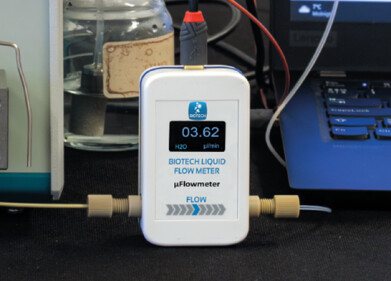HPLC, UHPLC
How is HPLC Used in the Food Industry?
Dec 30 2021
HPLC has a wide range of uses from pharmaceutical product development to testing for traces of drugs. Another common application for the technique is the food industry, where it can be used to separate, identify and quantify various ingredients, additives and contaminants. Read on as we take a closer look…
Pesticides
Pesticides refer to “chemical substances used to prevent, destroy, repel or mitigate any pest ranging from insects (i.e., insecticides), rodents (i.e., rodenticides) and weeds (herbicides) to microorganisms (i.e., algicides, fungicides or bactericides)”
Clearly, they have their benefits – namely, keeping away pests to maximise crop yields. With that in mind, it’s no surprise that an estimated 5.6 billion pounds are used every year across the globe. But their legacy doesn’t always end when crops are harvested and washed.
When pesticide residues stay on food, they are ingested by humans. In previous studies, the consumption of pesticides has been linked with various types of cancer along with reproductive issues like birth defects and infertility. Despite that, it’s estimated that over 90% of Americans have pesticides in their bodies.
HPLC can be used to detect and quantify target analytes to monitor pesticide levels on food products, to keep them in line with government limits and protect consumers.
Antibiotics
Another potentially harmful ingredient in food are antibiotics. These are given to animals to treat, prevent and control common diseases. As with pesticides, however, they can remain in the food chain as residues. The main risk here is that the drug-resistant bacteria could transfer to humans.
With antibiotic resistance responsible for 23,000 and 25,000 deaths each year in the US and Europe respectively, it’s no surprise that many countries have banned them – and testing is required to make sure they’re not making their way into the food chain. This is another area where HPLC can lend a hand.
Aflatoxins
Aflatoxins are a naturally occurring issue in a number of food crops, which destroy an estimated 25% of global crops each year. The poisonous substances are produced by mould, which is more likely to grow in high temperatures and high humidity. Aflatoxin contamination can occur before harvest in nuts and grains as well as post-harvest in things like coffee, spices and rice – due to improper storage.
There are at least 14 aflatoxins variations, though B1, B2, G1 and G2 are known to be the most dangerous to humans and animals. Using HPLC analysis, it’s possible to both identify and quantify aflatoxin contamination in a variety of crops.
Another naturally occurring contaminant is acrylamide, which forms during high-temperature processing of starchy foods. The analysis of this chemical is discussed in the article, ‘Selective and Robust UHPLC-MS/MS Assay for the Determination of Acrylamide Levels in Food Samples’.
Other ingredients
As well as residues and contaminants, there are a range of other ingredients which can be added to food products to enhance their flavour, appearance or lifespan. As these preservatives, flavourings and colourants are used, many of them become linked to health issues and eventually banned. As a result, they are another area to add to the list for HPLC.
Digital Edition
Chromatography Today - Buyers' Guide 2022
October 2023
In This Edition Modern & Practical Applications - Accelerating ADC Development with Mass Spectrometry - Implementing High-Resolution Ion Mobility into Peptide Mapping Workflows Chromatogr...
View all digital editions
Events
Nov 12 2024 Tel Aviv, Israel
Nov 18 2024 Shanghai, China
Nov 18 2024 Plainsboro, NJ, USA
Nov 20 2024 Karachi, Pakistan
Feb 03 2025 Dubai, UAE














